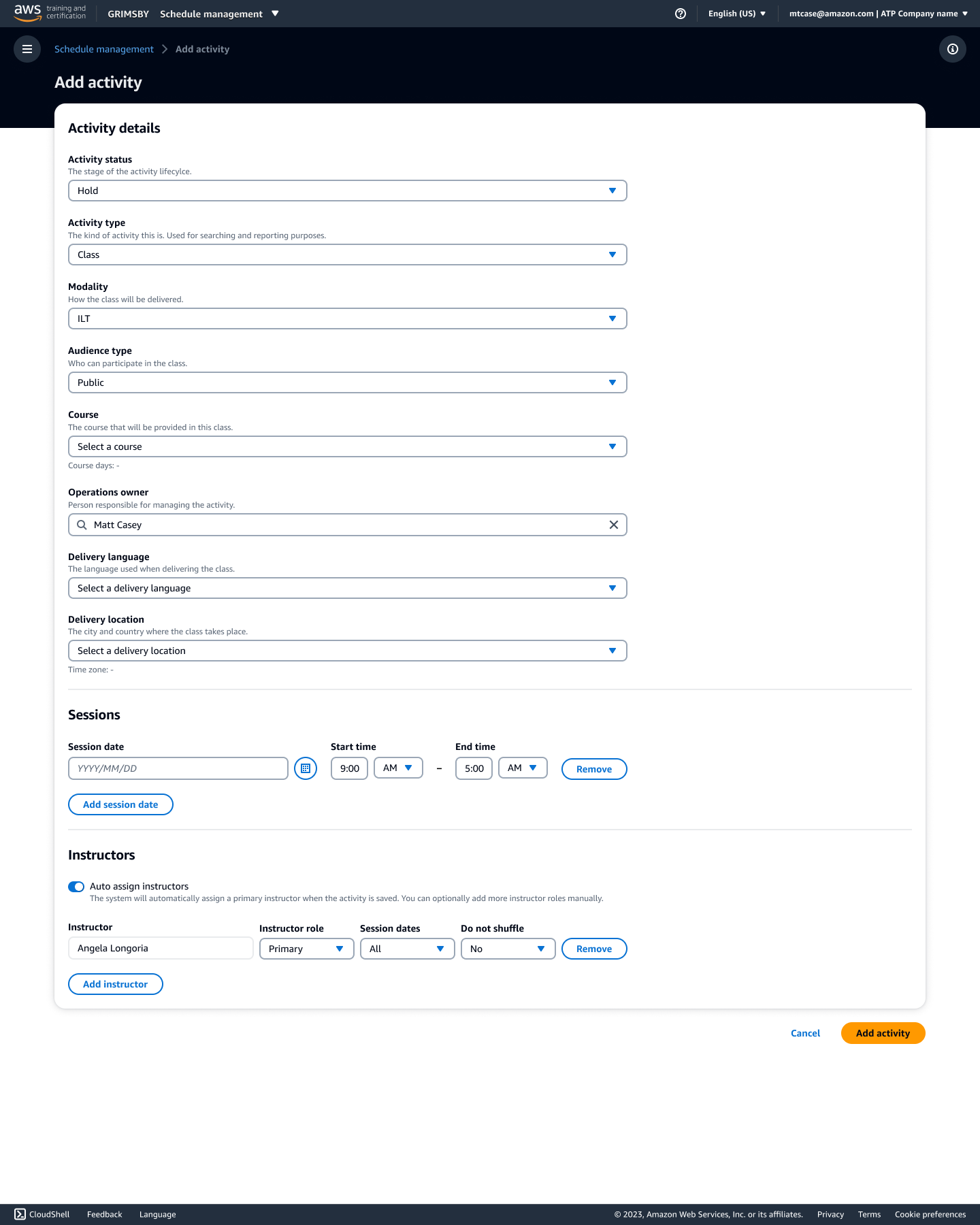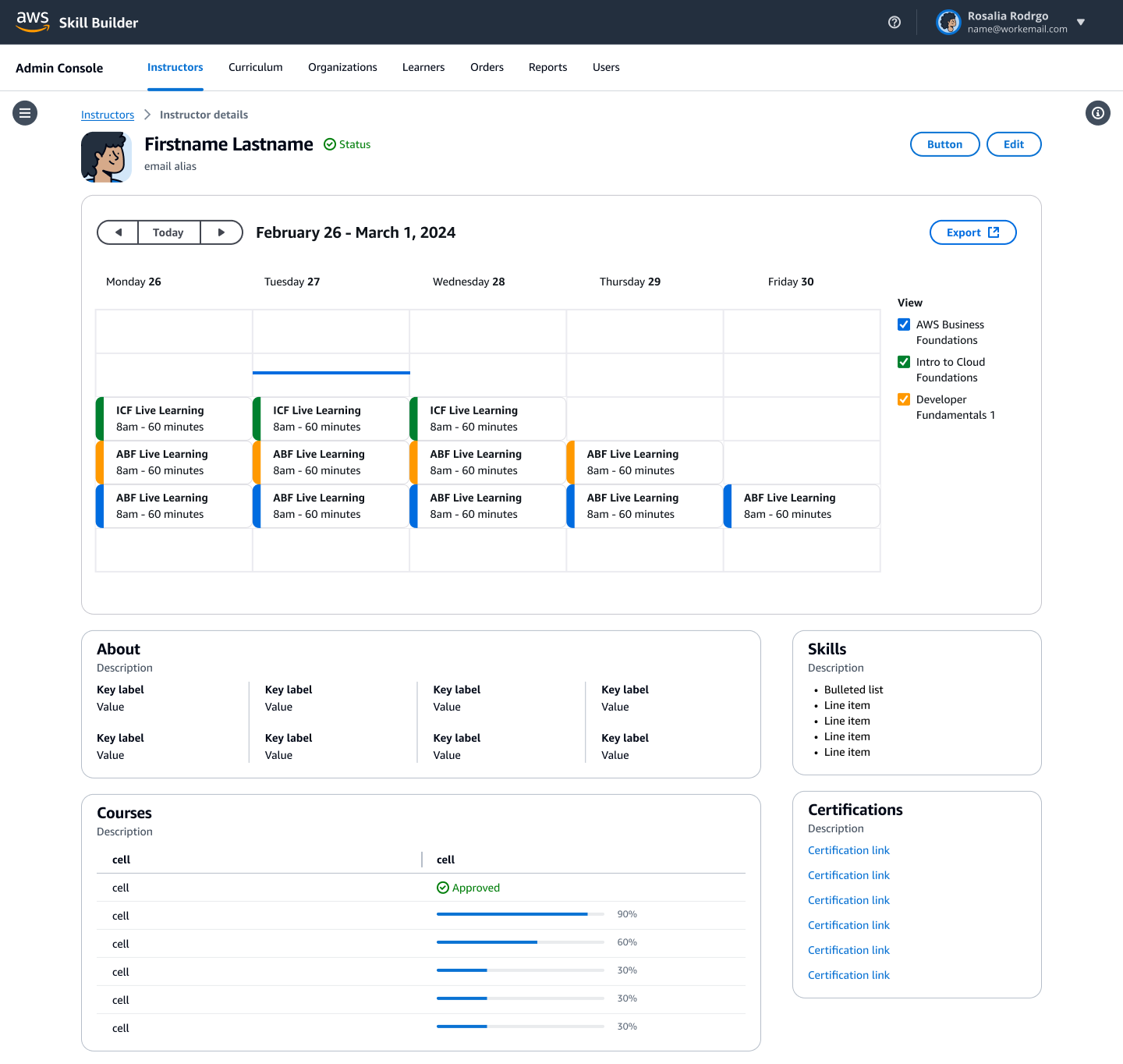
AWS Schedule Management System

AWS Schedule Management System
Problem:
AWS Training Delivery Services oversees training programs for millions of learners globally, managing everything from instructor credentials and live training schedules to resource optimization and end-to-end training fulfillment. However, the proliferation of disparate, locally developed workflows across global teams created significant operational challenges.
Without standardized business rules or a unified system of record, teams relied on redundant manual processes that hindered scalability and made it impossible to accurately measure business performance. This fragmented approach threatened to impede the organization’s growth trajectory and operational efficiency.
Goal:
I led the design initiative to establish a unified global platform for instructor management and training schedule coordination, consolidating diverse regional practices into a standardized framework. This involved synthesizing complex business rules from multiple delivery teams worldwide to create a cohesive system that served as the single source of truth for the organization.
Process:
I developed and implemented a highly effective UX design process that combined regular global stakeholder engagement with iterative design validation. Through weekly collaboration sessions with diverse user groups, I gathered requirements, validated design concepts, and refined solutions before moving into development.
This systematic approach included conducting benchmark time studies to identify efficiency opportunities, leading to two consecutive rounds of significant improvements - first achieving a 30% efficiency gain (exceeding our 20% goal), followed by an additional 20% improvement. Combined with continuous user feedback through satisfaction surveys and usability testing, this data-driven approach ensured successful delivery of multiple training management tools while consistently elevating both user satisfaction and enabling rapid enhancement cycles based on real-world usage.
Result:
Over a three-month period, I led the design and launch of an instructor management system with global stakeholder input, followed by the design and release of a comprehensive schedule management tool that streamlined class delivery from sales opportunities to billing. These initiatives enabled the expansion of our Amazon Training Partner network with a partner class management tool, resulting in 80% of all trainings now being delivered by external partners, significantly enhancing program scalability.

Examples of spreadsheets originally used to manage training delivery
Delivery teams initially created dozens of spreadsheets per team, without connection to each other. They had to copy and paste data from one to another multiple times to track which instructors were teaching which course, when the courses were scheduled, what was included in the course, etc. Multiple people would work from the same sheets without standardized or enforced meaning for the data entered, resulting in unreliable information and tons of duplicative work.
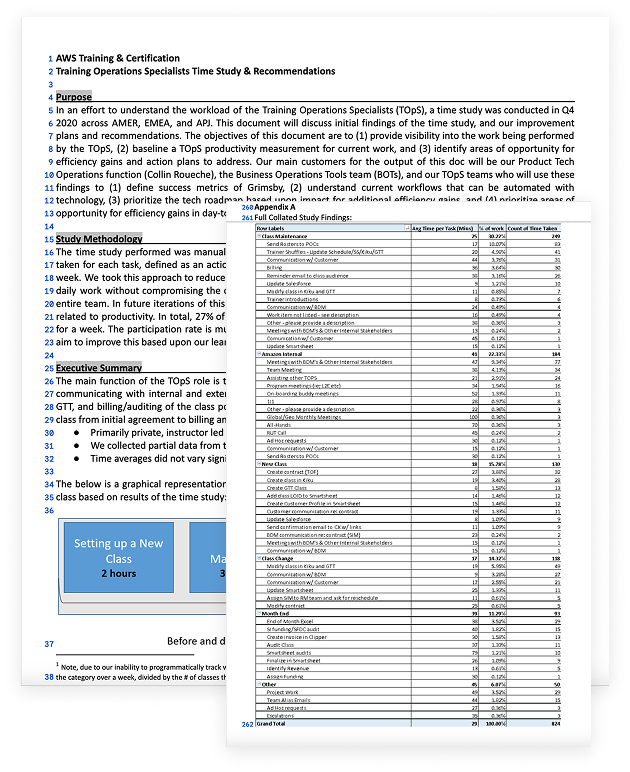
Time studies
Through rigorous time studies covering 27% of our delivery teams, we established baseline performance metrics and identified prime opportunities for productivity enhancement. Our initial efficiency initiative exceeded its 20% target, achieving a 30% reduction in Time on Task (ToT). Subsequent improvements yielded an additional 20% ToT reduction, demonstrating sustained operational gains through iterative optimization.

Workflow diagrams
These diagrams outlined the lifecycle of a class delivery from initial opportunity with our business delivery managers, through to fulfillment of delivering the training and conducting post-class activities like billing. I created them after rounds of interviews and requirements gathering. They served as an aid to show the common steps that all of these teams were going through as they facilitated deliveries and helped gain alignment on providing a standardized business process.
These particular diagrams illustrate the lifecycle of an instructor led training from opportunity to delivery and finally billing. It helped us align on the people involved and the related functionality we needed to build to support successful trainings.
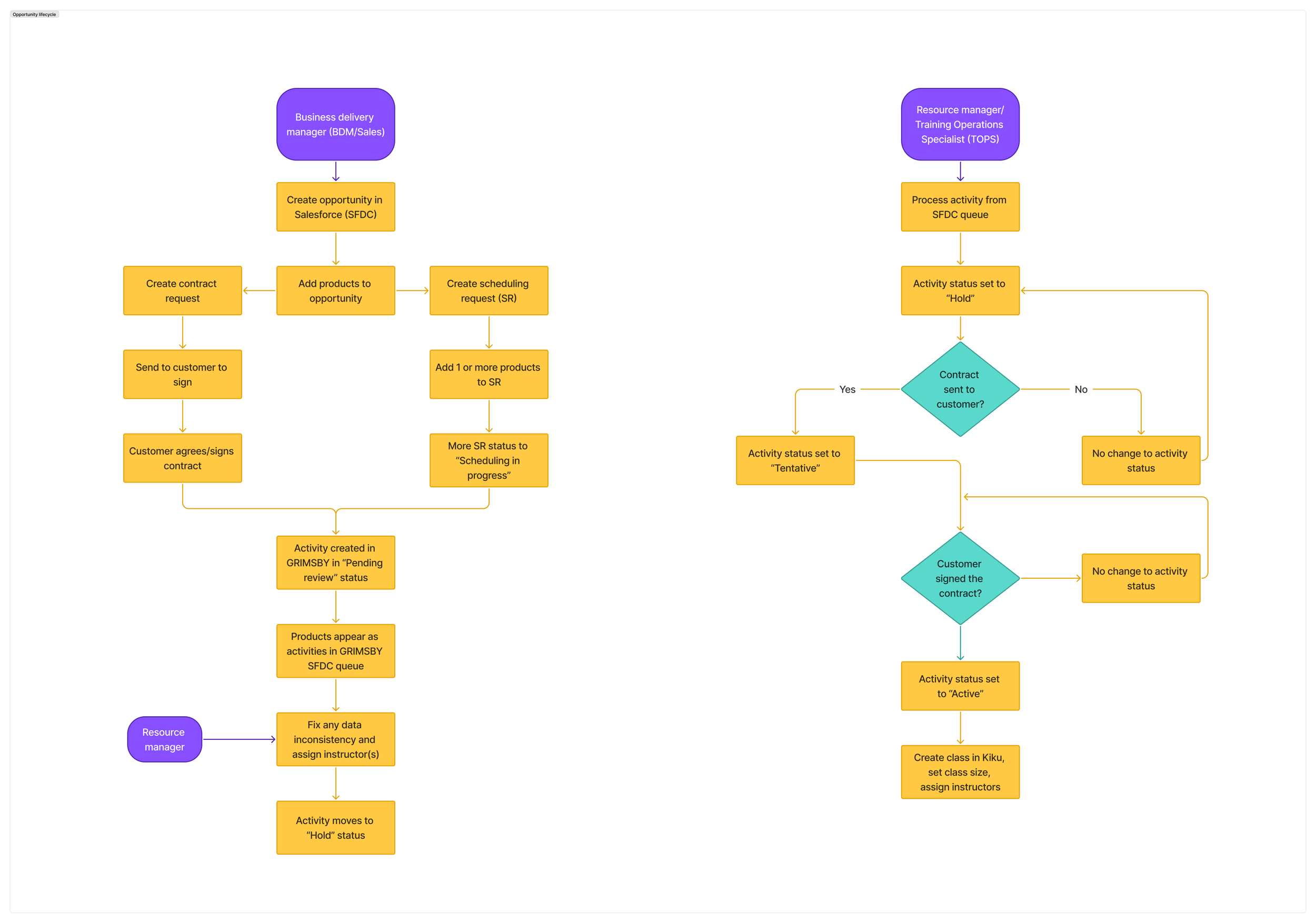
Outcomes
The outcomes of exercises like this was identifying key use cases to support our Training Delivery teams in our scheduling application:
• Integrate with SFDC to align private onsite classes with sales opportunities
• Prepare a schedule of instructor led classes and assign qualified instructors for their delivery
• Track the revenue, costs, funding sources and billinginformation for classes
• Integrate with the billing systems to invoice customers for private onsite classes
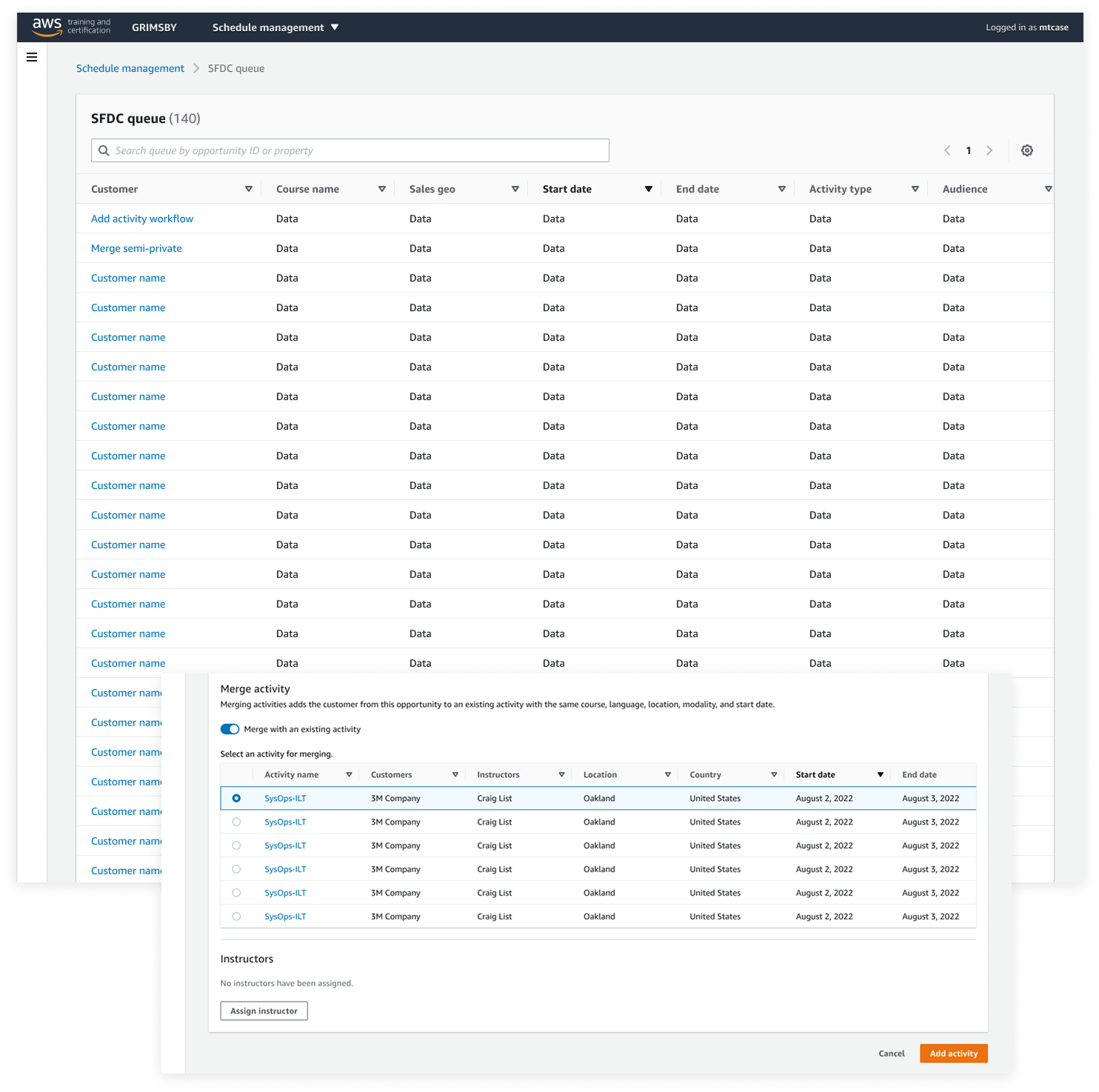
SFDC opportunity queue
When an opportunity is created in Salesforce, a Business Delivery Manager (BDM) enters customer information and specifics about the courses they are purchasing under contract. Once a contract is signed, the opportunity is sent to a queue where AWS Training Operations Specialists (TOPS) ensure the data mapped correctly to our business data. They may also merge or attach the class to another existing one when there are multiple customers requesting semi-private trainings.

Global activity record
This list serves as the single source of truth for all classes being delivered by the AWS training and certification program. Once opportunities are imported into the system their data is standardized and instructors can be assigned. This view helps to align the varied business practices taking place across different geographies. It also cleans erroneous data, and eliminates the need to copy and paste course and instructor schedule information across dozens of different spreadsheets as was the practice earlier.
(Note: see a handful of accessibility annotations provided to ensure this is usable for team members with accessibility needs.)
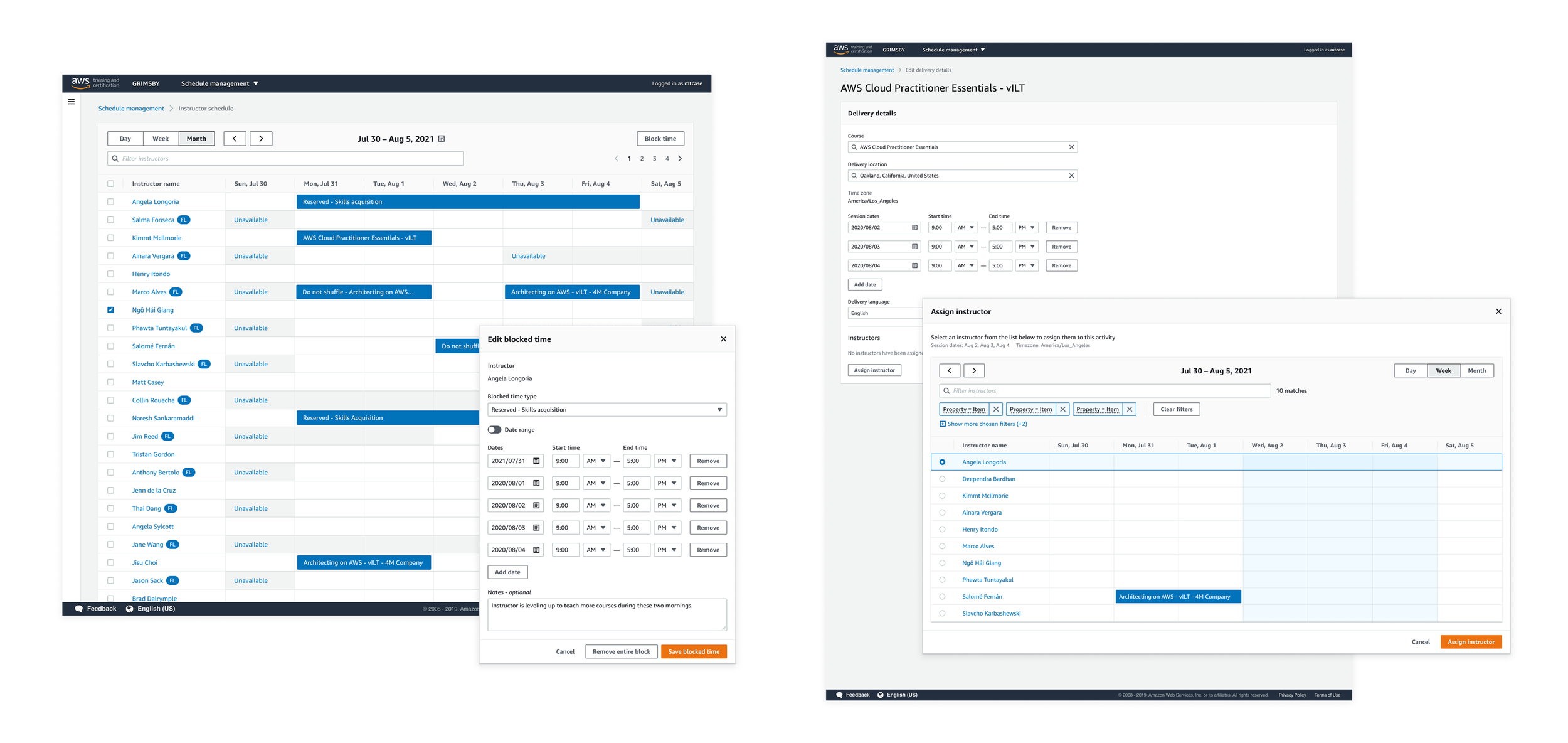
Instructor schedules and instructor assignment
Here are views of our instructor schedules, time blocking interface, and instructor assignment views. One of the most important areas to create efficiency for these teams was to integrate a schedule for each instructor or freelance trainer, so that they could optimize resource allocation. This enabled teams to reduce conflicting schedules, instructors to prepare for class day, and set the stage for us to automatically assign and reshuffle instructors so that we could maximize the number of classes we delivered.

Research & reports
Post-launch, I implemented quarterly UMUX-Lite surveys to measure the schedule management tool's effectiveness and user satisfaction. The surveys guided our prioritization of features and improvements, with scores consistently increasing across releases. These user-driven enhancements ultimately delivered a 20% time savings for our users, validating our approach to product development. Here are some examples of the results and research reports I would write and distribute.
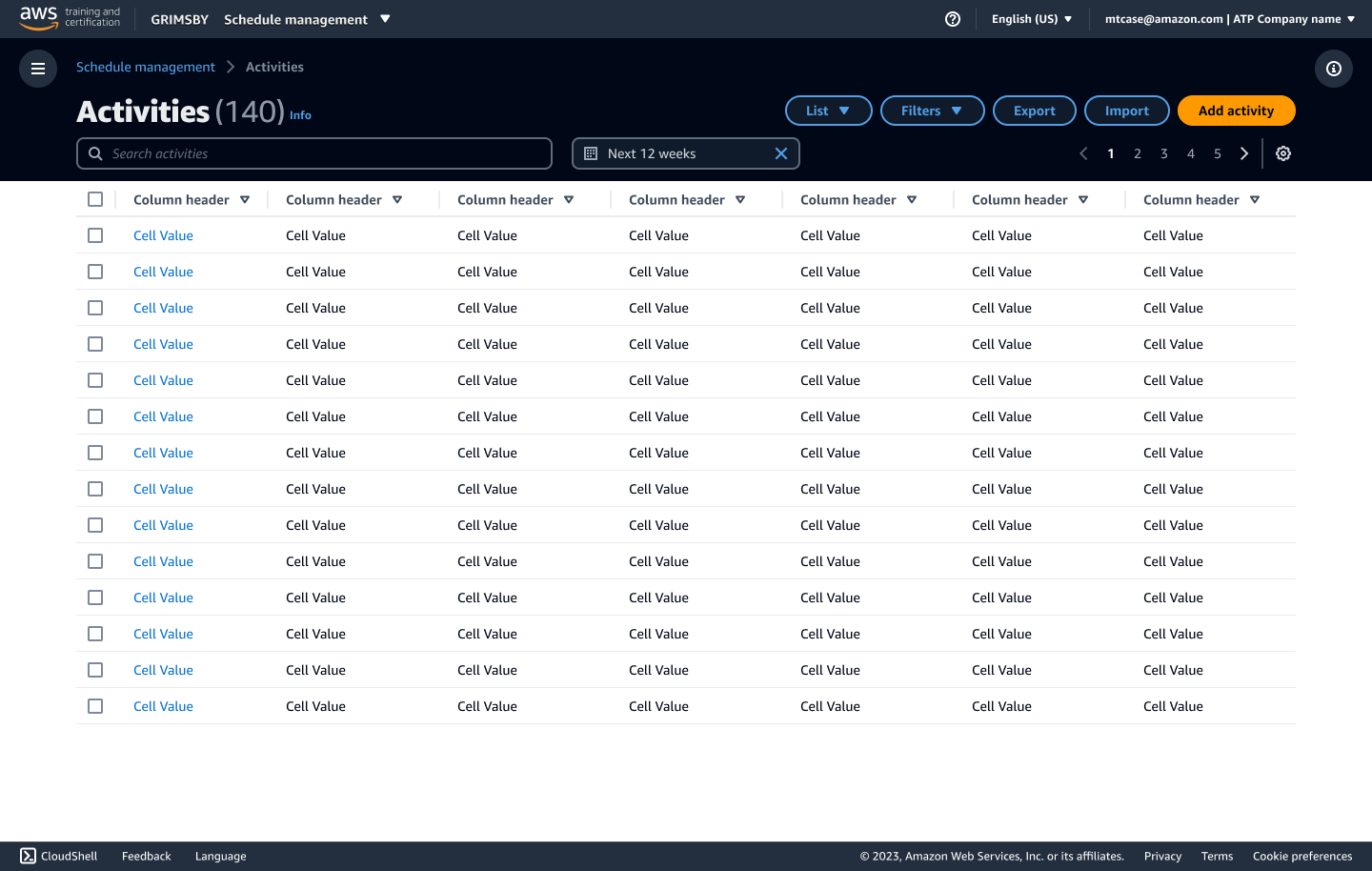
Schedule management v2, Parter Class Manager and beyond!
As we received user feedback and continued to iterate (and as our design system evolved), we released more features. Eventually we leveraged integrations with instructor schedules release automatic instructor assignment. We also opened the tool up to our partner network to help scale our training delivery at a faster, more efficient rate. The following is a sample of later iterations of the application along with the evolution of our design system.



